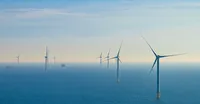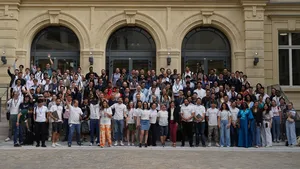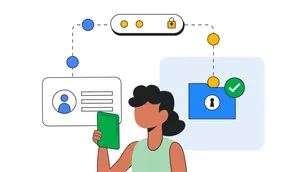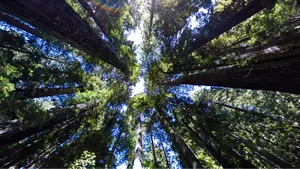Getting closer to a carbon-free future: Our largest offshore wind projects to date

At Google, we know that climate change is top of mind for many of our users, with search interest for “energy crisis” hitting an all-time high in 2023. That’s why we are committed to developing sustainable solutions for our users, businesses, governments and our own operations.
Today, we’re announcing power purchase agreements for more than 700 megawatts of clean energy — including our largest offshore wind projects to date in The Netherlands. As a result, over the next couple of years, our operations are projected to reach more than 90% carbon-free energy 1 in The Netherlands, Italy and Poland, and close to 85% in Belgium. This is a significant step towards our aim to operate on 24/7 carbon-free energy in all data centers and campuses in Europe.
To address the climate crisis and secure stable, affordable access to energy, we need to transition from fossil fuels to carbon-free energy sources. Technologies like solar and wind are a key part of this transition.
Our largest offshore wind projects to date
Windmills and The Netherlands go hand in hand. They were used for centuries to drain lakes and marshes that affected the land. Now, they play an important role in the Dutch transition from fossil fuels to carbon-free energy resources.
Today, we’re also announcing our largest offshore wind project ever. Together with the existing power purchase agreements we have previously signed in The Netherlands, these projects will help our Dutch data centers and offices reach more than 90% carbon-free energy in 2024. 2
We’ve signed power purchase agreements with Shell and with Eneco, owners of the Crosswind & Ecowende joint ventures, to support 478 megawatts of carbon-free energy capacity with two new-to-the-grid offshore wind farms: HKN V and HKW VI. These agreements support the development of these subsidy-free offshore wind farms, which are expected to contribute to about six percent of the country's annual electricity consumption and will foster technology innovation and ecological development.
Additional carbon-free energy across Europe
Our ambition to operate on carbon-free energy around the clock by 2030 requires clean energy solutions in every grid where we operate. Today, we’re also announcing green energy deals in Italy, Poland and Belgium that will bring us closer to making our ambition a reality and contribute to the decarbonization of Europe’s electricity systems.
In Italy, we’ve entered into our first long-term Power Purchase Agreement to support an onshore wind energy project with 47 megawatts of clean energy generation capacity with Italian energy company ERG. Our current projections indicate that, once operational, this agreement will help our offices in Italy, as well as our Milan and Turin cloud regions, to reach more than 90% carbon-free energy on an hourly local basis in 2025.
Following our first power purchase agreement in Poland last year, we’re announcing two additional agreements for 106 megawatts of solar generation capacity with GoldenPeaks Capital. This will add clean energy to the grid that our projections indicate will help our offices and cloud region in Poland achieve more than 90% carbon free energy in 2025.
Finally, we’re announcing two new green energy deals in Belgium, which our current projections indicate will help us operate our offices and data centers in the country near 85% carbon-free energy on an hourly local basis in 2024. With these power purchase agreements, we’re helping bring 11 new onshore wind farms, developed by Aspiravi and Luminus, to the grid for a total capacity of 84 megawatts.
Creating greener and more resilient electricity grids in Europe
These efforts are part of our commitment to accelerate the decarbonization of the world’s electricity systems, a core focus of our ambitious goal to run our data centers and office campuses on 24/7 carbon-free energy on every grid where we operate by 2030.
At a time when the world relies more and more on digital services, Cloud computing and AI technologies, it is more important than ever to provide access to technology efficiently and sustainably. That’s why we continue to invest in solutions that can accelerate the decarbonization of electricity grids, and reduce the stress on local electricity grids by shifting work to other times and places, while maintaining the speed, safety and responsiveness you expect from Google.
To learn more about our sustainability efforts, visit https://sustainability.google.







